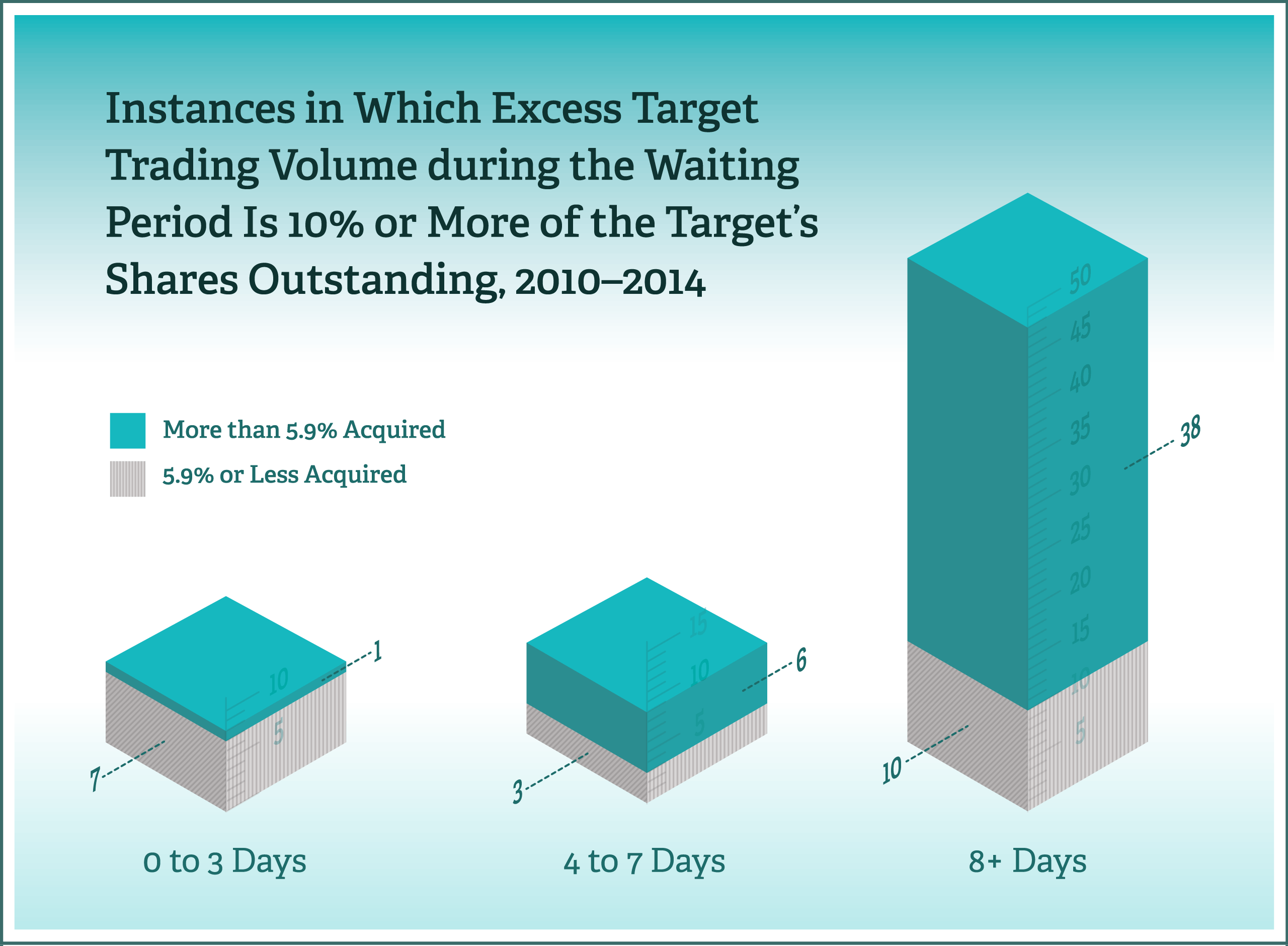-
Wolf Pack Activism: A Quick Look
In recent years, the influence of activist investors has been on the rise, and as successful proxy fights launched by activist hedge funds have become increasingly commonplace, activists have begun to set their sights on larger companies.
In each of the past five years, there were more than 100 instances of activist hedge funds acquiring more than a 5 percent shareholding interest in a target company. A review of the US Securities and Exchange Commission (SEC) filings related to these acquisitions sheds some light on the types of strategies employed by these activist investors.
When an investor, including a hedge fund, acquires more than a 5 percent shareholding interest in any class of securities of a publicly traded company, a countdown begins: within 10 days, the investor must file Form 13D with the SEC, according to Section 13(d) of the Securities Exchange Act of 1934. Except for a small dip in 2012, the duration of the waiting period used by activist investors to file the 13D after crossing the 5 percent threshold has remained relatively stable at around 10 days. From 2010 to 2014, the median stake disclosed by activist investors in a 13D filing was 5.9 percent. Although some hedge funds use the waiting period to make additional acquisitions, others do not but still wait eight days or more prior to the 13D filing.

-
Recently, the media and other observers have questioned this “waiting period” for disclosure, pointing to the general increase in hedge fund activism and to “groups” of activist funds under Section 13(d) of the Exchange Act. At times, activists or other hedge funds, which are not part of a group under Section 13(d), also focus on a common target; these activists have come to be termed “wolf packs.” Does this “waiting period” encourage “wolf pack” behavior or merely allow the activist to accumulate a larger holding before disclosure?
On average, the trading volume of stocks targeted by activists during the waiting period for disclosure is about one-and-a-half times higher than average. This jump in trading volume may signal the presence of wolf packs or may merely be driven by purchases made by an activist that ultimately makes the 13D disclosure, rather than by a wolf pack.
To better understand these trading behaviors and activist strategies, it is possible to parse how investors leverage the waiting period to acquire an activist position at times of abnormally high trading volume. A review of filings involving instances of high trading volume during the waiting period (10 percent or more of outstanding shares of a targeted firm) shows that investors who had crossed the 5 percent threshold were much more likely to delay filing until after 8 or more days. In these instances of abnormally high trading volume during the waiting period, just one activist reported a holding of more than 5.9 percent (the median stake acquired) in the first 3 days, compared with 38 activists that acquired more than 5.9 percent after at least 8 days. This is consistent with the notion that activists who accumulate larger positions delay their filing. Just as importantly, however, some activist investors who acquired less than 5.9 percent of the target’s shares during these high-volume trading instances of the waiting period also chose to wait 8 days or longer to file a 13D. This pattern seems consistent with the notion that certain activists delay filing a 13D in order to enable members of a wolf pack to accumulate large positions. ■
-
Gaurav Jetley is a Managing Principal in Analysis Group’s New York office. Xinyu Ji is a Principal in Analysis Group’s Boston office.
